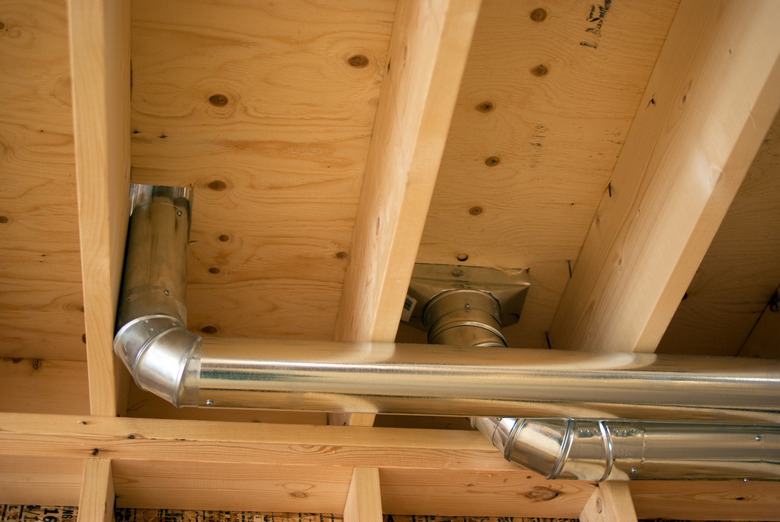How To Remove Ductwork
Removing ductwork is a challenging job for the simple fact that most ductwork systems are located in hard-to-reach places. Ducts for heating and air conditioning systems are often placed in attics and small crawl spaces underneath the house. Ductwork removal may be accomplished solo, but a helper comes in handy, especially when it's time to remove the ductwork from the space or to remove clutter as the ductwork is dismantled. A few basic tools and safety items are all that is required to remove most standard ductwork.
Things Needed
-
Battery-powered screw gun (optional)
-
Sockets and Phillips-head bits
-
Carpet knife or small pocket knife
-
1/4-inch socket wrench with assorted sockets (optional)
-
Small Phillips-head screwdriver (optional)
-
Vacuum cleaner (optional)
How to Remove Ductwork
1. Access the Ductwork
If the ductwork is located in a full basement or attic, the work is a lot simpler than if it's in a small crawl space. When working in a small space, be sure to bring all the necessary tools, including: drill, knife, flashlight, and any other useful items; if you forget something you'll have to crawl back out to get it. Also, be sure to wear a dust mask and leather work gloves, as fiberglass insulation is encountered during the entire removal process and sheet-metal ducts have sharp edges.
2. Start at the End
Begin at the end of the system. Ductwork systems consist of two parts, return and output. Output ducts deliver air conditioning and heat into the space, while return ducts deliver air back into the system. The main two ducts attached to most air conditioning/heating units is where the return and output ducts begin. Trace the ductwork system to its farthest point from the central unit.
3. Dismantle Sheet Metal Ductwork
The duct connections are commonly made with sheet metal joints and specially shaped pieces designed to fit the vent securely. Sheet metal ductwork is attached with sheet metal screws around the duct's circumference. To remove sheet metal ductwork, simply unscrew the sheet-metal screws around the duct. Most sheet metal screws are either Phillips head, requiring the proper screw bit, or have hex heads, requiring the proper socket, which can be used on the screw gun or ratchet handle.
4. Remove Flexible Ductwork
Flexible ductwork is easily removed from sheet metal joints, vents and wyes by cutting it off with a small knife. If working in a tight space, be sure to gradually move the dismantled sections forward as you work your way out. This prevents having to go all the way to the system's end a second time.
5. Dispose of the Ductwork
Dispose of the old ductwork properly and thoroughly clean the work area. Fiberglass pieces and fibers should be removed as completely as possible, either by sweeping or using a vacuum cleaner.
6. Save Duct Pieces for Reuse
Save sheet metal duct pieces if new ductwork is to be installed. Sheet metal ducts can often be reused or made into new ducts, and some of these pieces are specifically sized for the vents used in your particular duct setup.
